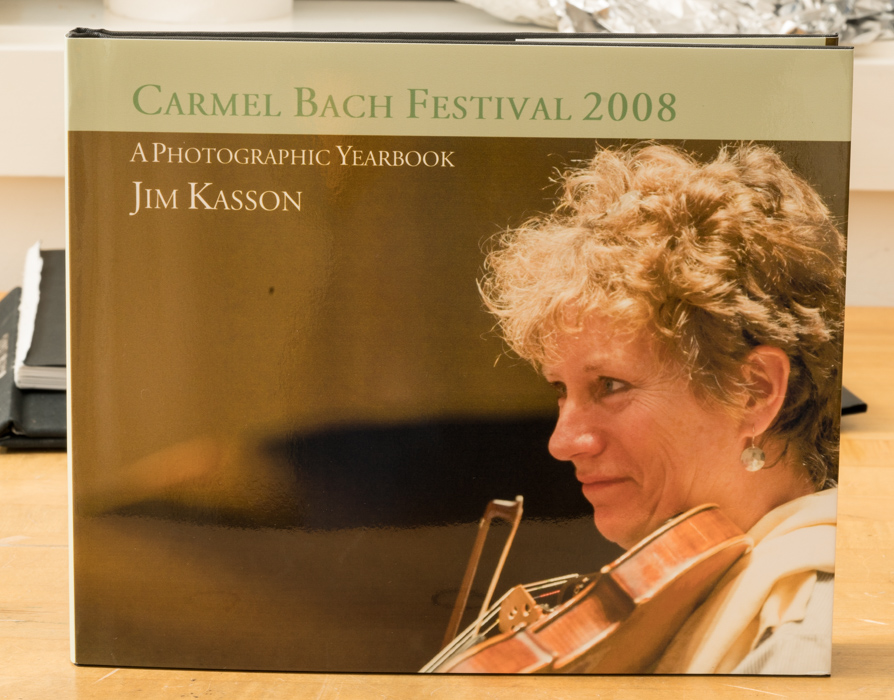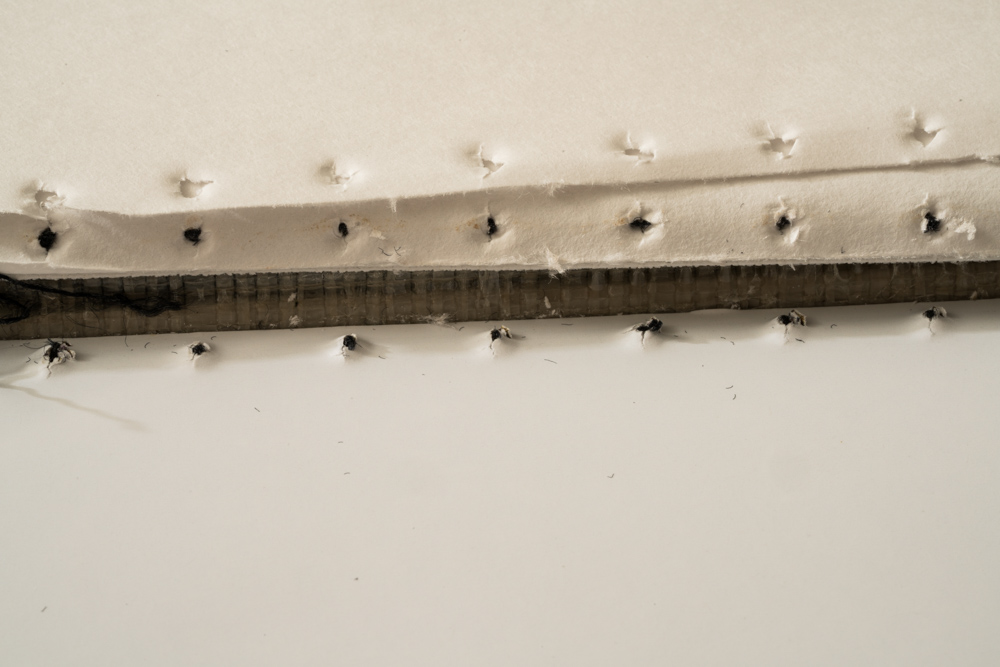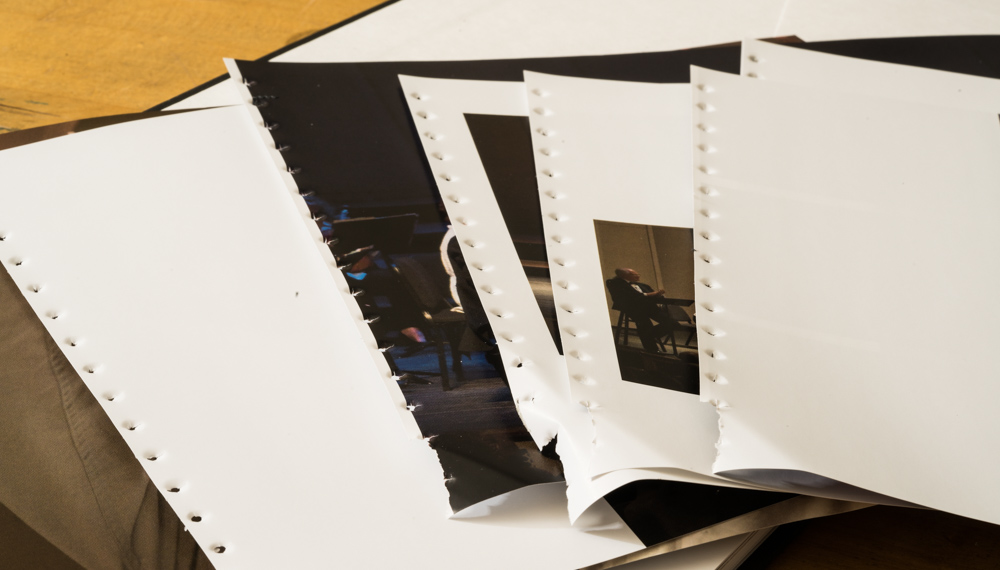This is part of a series about my experiences in publishing a book. The series starts here.
Yesterday, a reader commented on my disassembly of Staccato: “Does this endeavor end up being yet another argument for (color managed) digital books?”
I don’t think so. Whatever deficiencies afflict the binding of Staccato pale in comparison with the Blurb books that I’ve done.
Let’s take one of those apart.
I had 100 of these printed eight or nice years ago when I was the photographer for the Carmel Bach Festival:
I still have a few left, so it’s a good candidate for dissection.
Looking at one end shows no evidence of signatures:
When you open it, it appears that the pges are somehow crimped together about 3/8 inch from their ends:
When you open the book, it doesn’t come close to lying flat; you can’t see the inner half-inch or so of the full-bleed images:
When you open the cover, you can see where the mull is pasted down underneath the end sheet, but the end sheet is not double the page size, and is not folded back on itself. And what are those dimples?
Taking a closer look at the dimples:
An even closer look reveals evedence of something piercing the pages:
An incision with an X-Acto knife shows that the pages were indeed pierced:
With whatever was holding the pages together cut, they all come out. They are glued in, but that glue forms a weak bond:
And now we can see that the pages were stitched towether with black thread:
You can see the mull in between the pages that are still attached weakly by glue, running in a diagonal line across this image:
And, as suspected, there are no signatures. Maybe another way to look at it is that every page has its own signature:
Backing up for a general view:
What have we learned? This book is bound completely differently from any of the offset-printed books that I’ve been looking at for the last few days, and the way it’s bound is guaranteed to keep pages from being flat.
Some caveats:
- Blurb may have changed their binding techniques of late.
- Other print-on-demand (POD) book makers do offer what they term lie-flat books.
And, although this will be common knowledge to those who have been reading about my book-publishing endeavors all along, some other things about POD and offset books should be kept in mind:
- Paper choice is quite limited in POD books
- Color gamut is even more restricted that with offset
- Resolution is worse with POD
- Color repeatability in POD books is pretty chancy in my experience.
- Duotones and tritones are not possible with POD
- Spot color is not available with POD
- You can’t change paper type in the middle fo the book with POD













Sorry, I was unclear. I was referring to digital publications.
However, I claim no experience or expertise with “digital publications” and the issues of DRM.
Any vague view about the least bad POD book, Jim?
I haven’t done a Blurb book in several years, so I’m the wrong person to ask. In 2008, I did books with both My Publisher and Blurb, and liked Blurb better.
http://blog.kasson.com/technical/pod-specifics/
I suspect that there are many more alternatives now, with more choices for binding and paper. I’d be surprised — and pleasantly — if there were much better print engines for photographic POD than the hp liquid-toner electrophotographic printers. In low volume, inkjet is an obvious way to go, but it’s probably too expensive for commercial use.
Jim
Very useful to see the details behind and experiences of your book project.
You may have done this already, but I seriously recommend you try hand binding a book yourself. You can use cheap blank office paper, light card, some cloth and pva glue. The results can be horrible, but the actual experience is priceless. At worst, you end up with a handmade notebook.
I have done this as a prelim to printing and binding a book of my own images, where I get to control the quality of the entire process. Lessons learned can then be applied to dealing with larger numbers, what I should do myself and what I should outsource.
I posted some rough grab shots at this link…. http://www.mattobrien.ie/bookbinding as I do not know how to send you jpgs of the example images.
The Blurb binding you took apart looks like those awful library rebindings like when they make a paperback a hard cover.